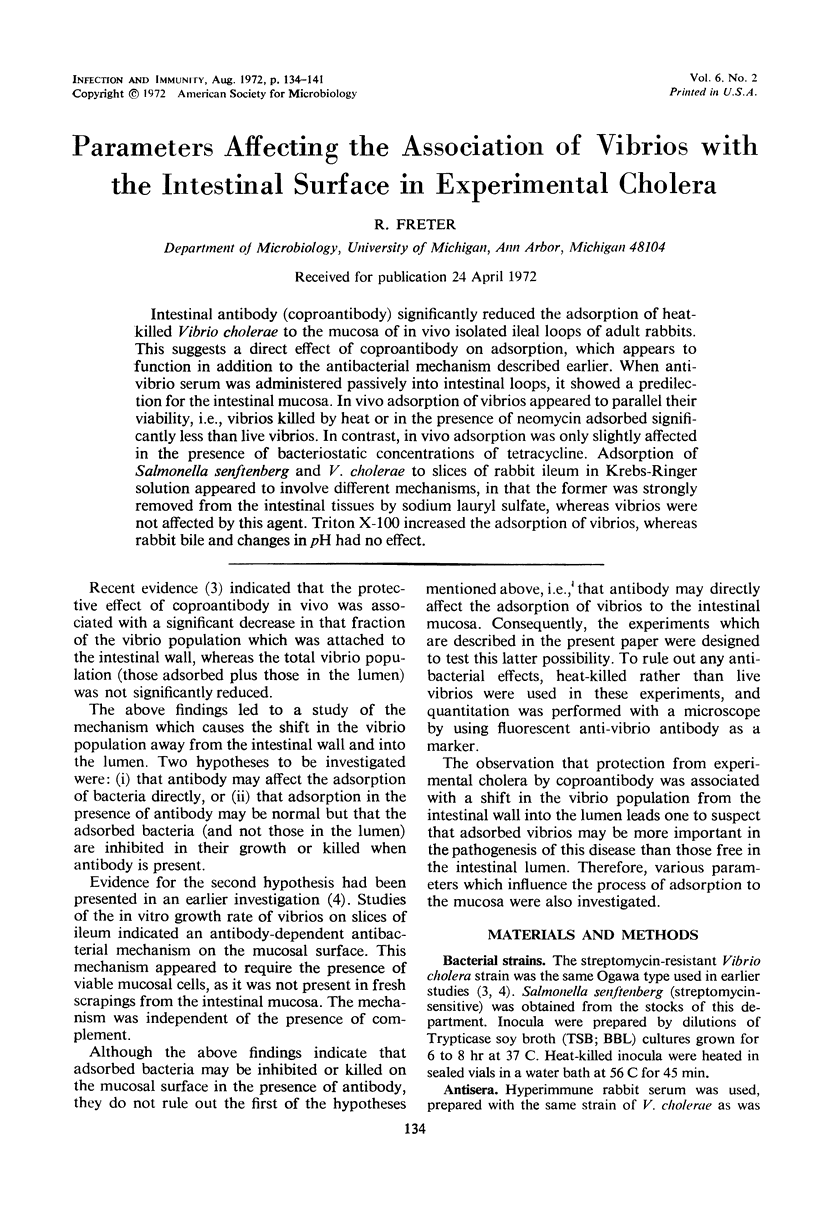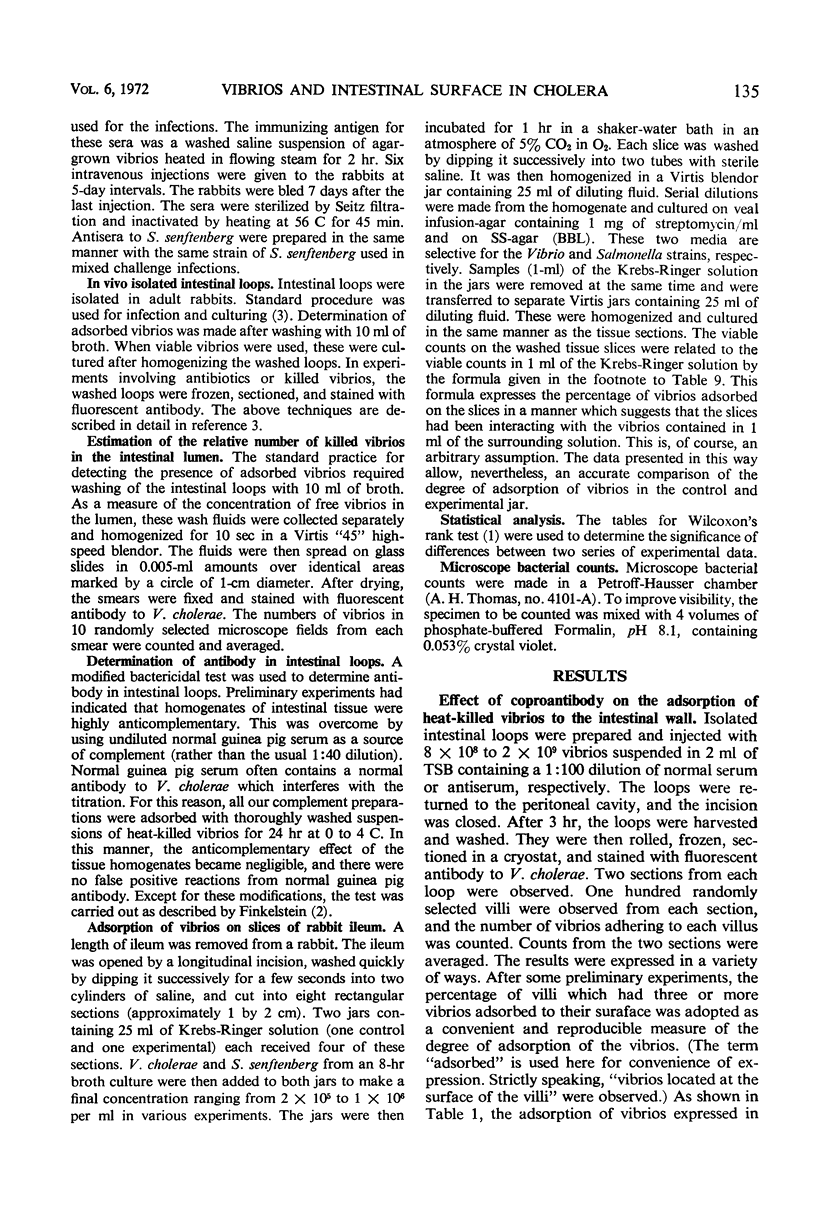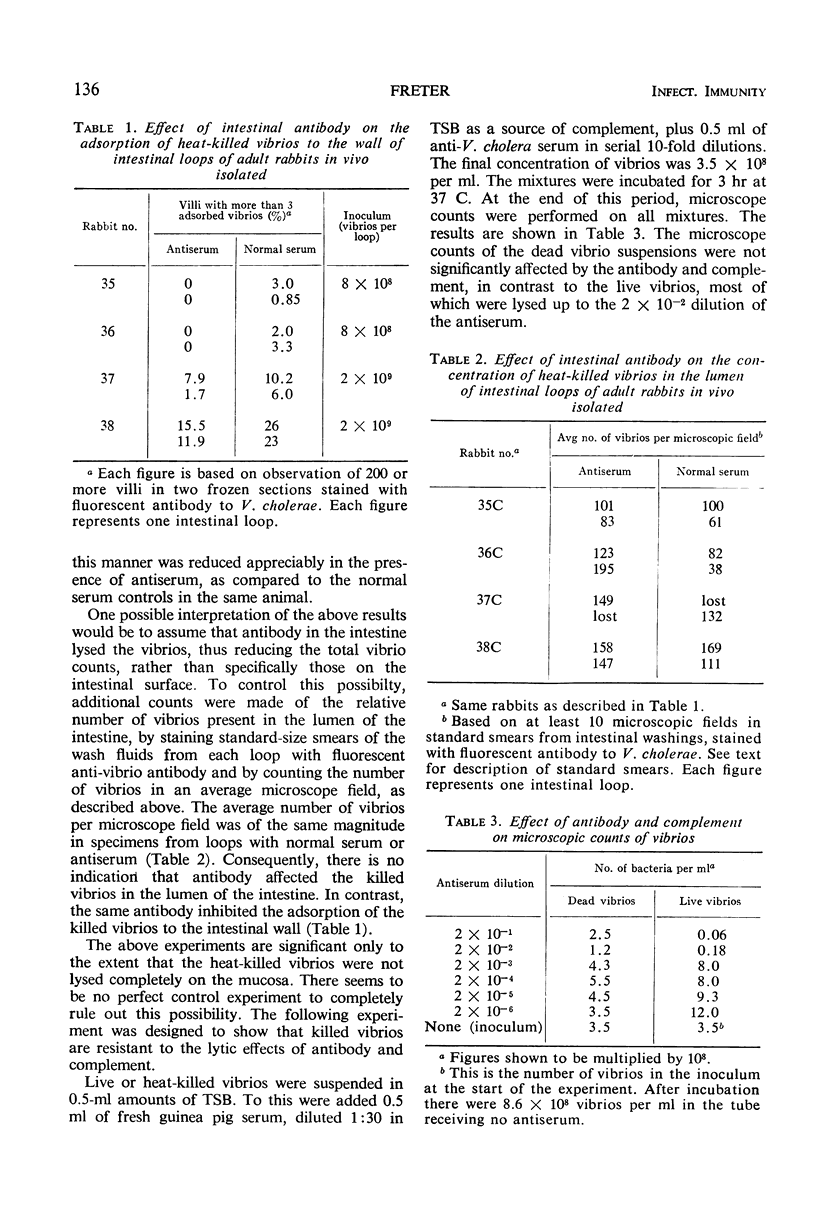Abstract
Intestinal antibody (coproantibody) significantly reduced the adsorption of heat-killed Vibrio cholerae to the mucosa of in vivo isolated ileal loops of adult rabbits. This suggests a direct effect of coproantibody on adsorption, which appears to function in addition to the antibacterial mechanism described earlier. When antivibrio serum was administered passively into intestinal loops, it showed a predilection for the intestinal mucosa. In vivo adsorption of vibrios appeared to parallel their viability, i.e., vibrios killed by heat or in the presence of neomycin adsorbed significantly less than live vibrios. In contrast, in vivo adsorption was only slightly affected in the presence of bacteriostatic concentrations of tetracycline. Adsorption of Salmonella senftenberg and V. cholerae to slices of rabbit ileum in Krebs-Ringer solution appeared to involve different mechanisms, in that the former was strongly removed from the intestinal tissues by sodium lauryl sulfate, whereas vibrios were not affected by this agent. Triton X-100 increased the adsorption of vibrios, whereas rabbit bile and changes in pH had no effect.
Full text
PDF







Selected References
These references are in PubMed. This may not be the complete list of references from this article.
- Freter R. Mechanism of Action of Intestinal Antibody in Experimental Cholera II. Antibody-Mediated Antibacterial Reaction at the Mucosal Surface. Infect Immun. 1970 Nov;2(5):556–562. doi: 10.1128/iai.2.5.556-562.1970. [DOI] [PMC free article] [PubMed] [Google Scholar]
- KASAI N. Studies on mucus antibody of bacillary dysentery. I. The relationship between the excretion of Shigella organisms and the mucus- and serum agglutinins. Jpn J Exp Med. 1954 Aug;24(4):199–209. [PubMed] [Google Scholar]


